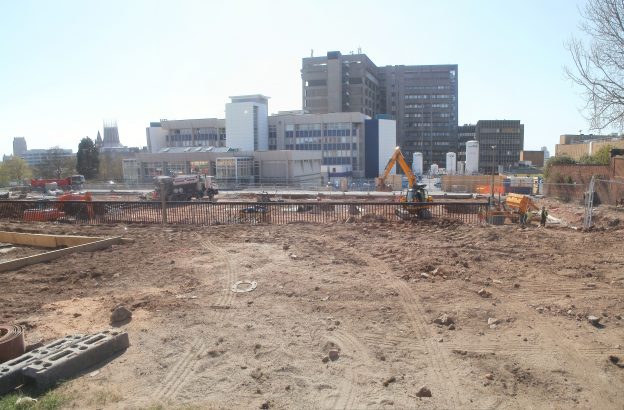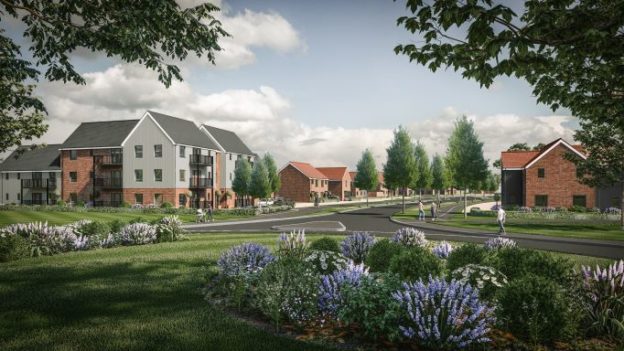By Kasia Banas, Consultant
January saw Chelgate Local kick off 2019 with another successful breakfast briefing event.
The Chelgate team partnered up with Barton Willmore to host a timely discussion on the impact of an ageing population on housing provision. Delegates from across Kent gathered to hear from speakers from MHCLG, planners Barton Willmore and older people’s housing developers McCarthy & Stone.
Dan Fryd, Account Director at Chelgate, welcomed the packed room and started proceedings by setting out the main issues around housing supply for our ageing population. He pointed out that in the midst of the housing crisis the topic rarely gets the attention it deserves, but the proportion of over 85-year olds is set to double over the next 25 years – making it necessary for the government and the housing sector to start planning for this particular housing need now.
Lucy Seymour-Bowdery, senior planning officer at MHCLG and the lead on older people’s housing, then presented the recent regulatory changes relating to provisions for an ageing population. She noted the revised NPPF strengthened the policy approach to planning for the housing needs of different groups of people; revised the definition of older people; and introduced the expectation that planning policies for housing will make use of Optional Technical Standards for accessible and adaptable housing.
She also mentioned the statutory duty to produce guidance for local planning authorities on how local development documents should meet the housing needs of older and disabled people, introduced by the Neighbourhood Planning Act 2017. While she was not able to provide a date for the release of new policy guidance, she teased that it will focus on the importance to plan for older and disabled people’s housing needs, benefits of accessible and adaptable housing, types of specialist housing for older people and inclusive design.
James Donagh, development economics director at Barton Willmore, then took to the stage to present a high-level review of supply and demand for specialist housing for older people across mid-west Kent. He outlined the population changes expected between 2017 and 2041, most notably, the fast-growing demographic groups of over 65s and 75s. He projects that this increased demand for specialist elderly housing will generate a need for an extra 5,300 units (45%) by 2029 and 10,500 units (90%) units by 2041. James pointed out that there is a lack of diversity in tenure and type of available units with two-thirds being social rent and four-fifths being sheltered housing. He concluded suitable housing for older people could be a part of the solution to the housing crisis.
The event finished with a panel discussion with Cllr Clive English, chair of the Planning Committee at Maidstone Borough Council; Guy Flintoft, planning director at Retirement Villages Group; Gary Day, land and planning director at McCarthy & Stone,; and chaired by Barton Willmore’s director, Simon Flisher.
There was a consensus amongst our panellists that there is a growing need for housing provision for older people in the UK and Kent specifically. The example of Japan was mentioned a number of times as a warning for what’s to come if this demand is not addressed. Gary Day encouraged new entrants into this market space, and there was agreement that existing providers must grow to help deliver new retirement communities. Innovative multi-generational housing models were also identified as an opportunity area that could contribute to solving the issue at hand.
Developers and politicians are not the only ones looking for sustainable solutions that meet the needs and aspirations of our ageing communities. Programmes such as ‘Transform Ageing’ are paving the way to taking a community and design-led approach to improve people’s experience of ageing and we hope they can drive positive change, responding to the challenge of our ageing society.
Our next event will take place in March and will address ‘Infrastructure led growth’ – A look at how Crossrail 2, HS2 and major infrastructure could drive growth. Further details will be available on our website.




 for 262 new homes on three parcels within the Heybridge North Garden Community, masterplanned by Countryside. The committee originally deferred its decision but subsequently consented the application unanimously in December 2022.
for 262 new homes on three parcels within the Heybridge North Garden Community, masterplanned by Countryside. The committee originally deferred its decision but subsequently consented the application unanimously in December 2022.
 planning applications for a development of 123 homes and a health centre in Romford, Havering. Located around the historic Neopost House building, the proposed development will provide three blocks with affordable housing through social rent and shared ownership, as well as green recreation space for families.
planning applications for a development of 123 homes and a health centre in Romford, Havering. Located around the historic Neopost House building, the proposed development will provide three blocks with affordable housing through social rent and shared ownership, as well as green recreation space for families.

 over 1,000 people: it is an integral part of the history of paper-making. Redrow South East proposed a development of around 200 homes very much in keeping with the history of the site and the existing Listed buildings. Chelgate assisted with political engagement and local community and stakeholder consultation for this historic site – we were a finalist in the Planning Project of the Year category of the PRCA public affairs awards in 2019.
over 1,000 people: it is an integral part of the history of paper-making. Redrow South East proposed a development of around 200 homes very much in keeping with the history of the site and the existing Listed buildings. Chelgate assisted with political engagement and local community and stakeholder consultation for this historic site – we were a finalist in the Planning Project of the Year category of the PRCA public affairs awards in 2019.


